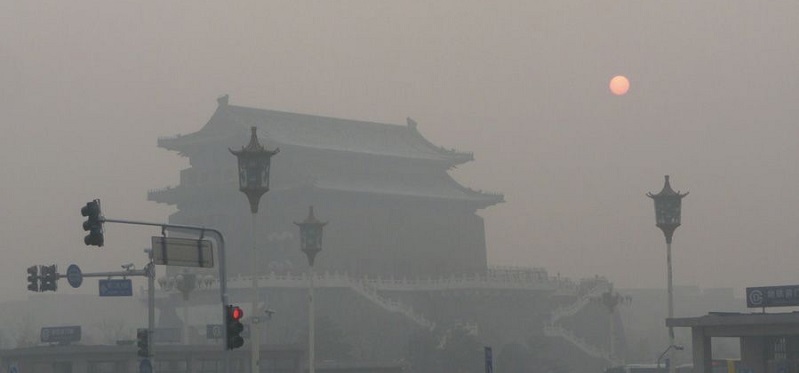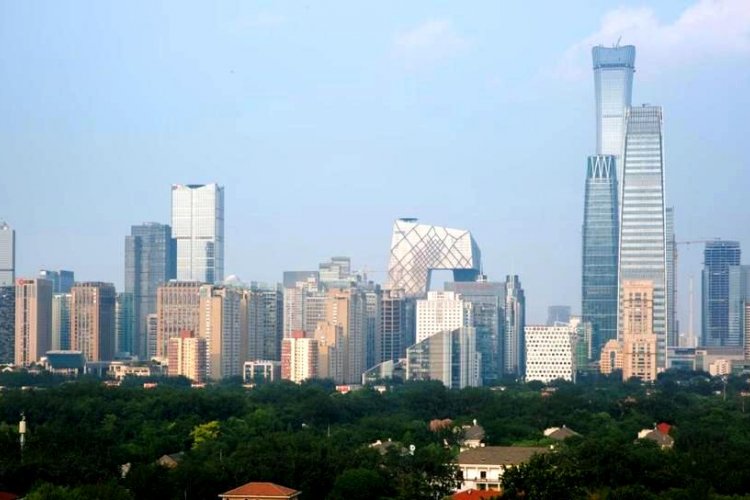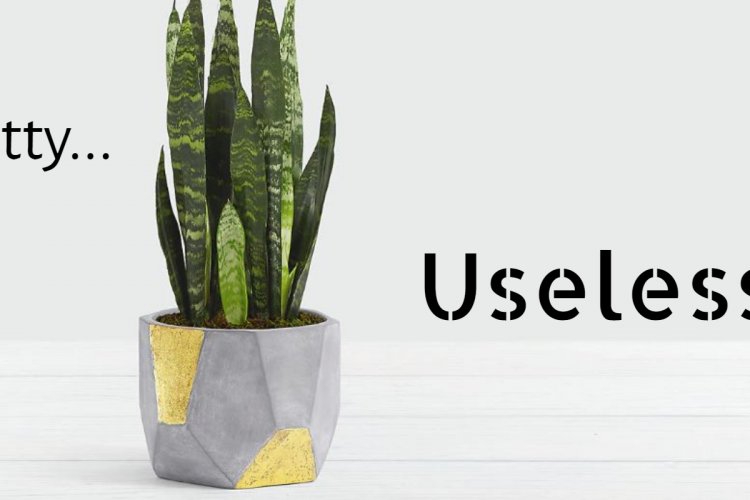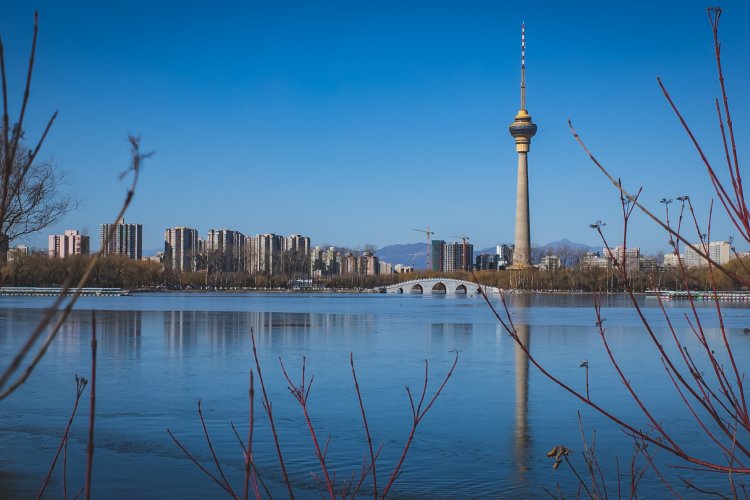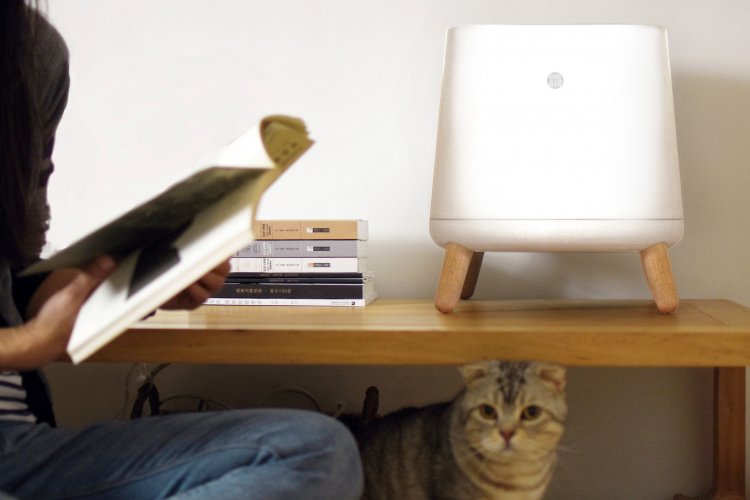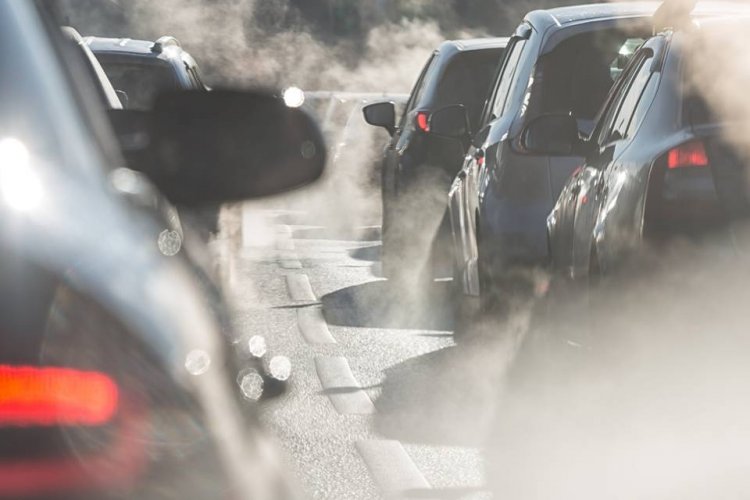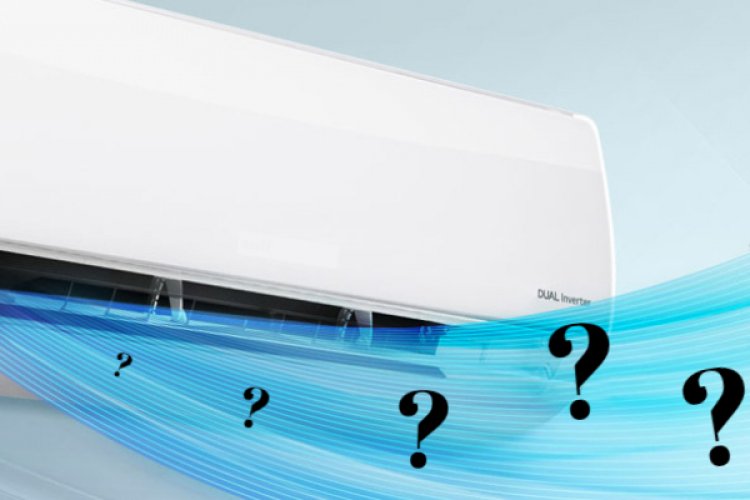Changes to Beijing’s Emergency Air Pollution Response System Due Dec 15
Adjustments to Beijing's four-tiered emergency air pollution warning system take effect December 15, raising the threshold of the most dire alert but increasing the number of cars to be banned from the road during the two highest alerts.
The new policy extends and slightly modifies a pilot adjustment that was first tested earlier this year, and extends beyond Beijing to formally apply to Tianjin and some of Beijing’s filthiest neighbors in surrounding Hebei (though each city will make its own decision about calling an alert).
Additionally, more cars will be removed from the roads during the two highest level alerts, Orange and Red. Vehicles that only meet the National I and II emissions standards will be banned from weekday rush hours under Orange Alerts. Under Red Alerts, these vehicles will be completely banned from the roads, while all remaining vehicles will be restricted on an odds-and-evens basis.
While National I- and II-standard cars only represent eight percent of the vehicles currently on the road, they account for an estimated 30 percent of vehicle emissions. The city has been phasing out older cars for years, and by February 15 of next year I and II cars will no longer be permitted in the city.
Beijing’s air warning system was first put in place in March of 2015, and initially called a Red Alert when the air quality was forecasted to be over AQI 200 for three consecutive days. The first-ever Red Alert was enacted in December of last year.
Under the new system, the Red Alert threshold has been raised to four – and two of those days must be forecasted to be over 300.
Looking back at official records from the Ministry of Environmental Protection, Beijing has only had four or more consecutive days of over AQI 200 air three times since the system was put in place 20 months ago, and none since a horrid seven-day stretch from December 20 to December 26 last year. The other two incidents happened in November of 2015: for five days November 11-15, 2015 and a four day-stretch from November 27-30, 2015. Only two of those had two consecutive days of AQI > 300.
In a masterpiece of bureaucratic hedging, the new policy has three sections of guidelines for each of the four warning levels: Health Protection Guidance Measures (aka suggestions you are free to ignore); Suggested Voluntary Guidelines to Reduce Emissions (aka more suggestions you are free to ignore); and finally Mandatory Guidelines.
Our (albeit crude) translation of all of these guidelines are at the end of this post, but in the mean time, here are some highlights for those of you with short attention spans:
– It’s only under the most dire of air quality warnings (the Red Alert) that wearing a mask outdoors even gets mentioned, and then only as a health guideline and in the most casual recommendation possible, stating: “those working outdoors may implement (可采取 kě cǎiqǔ) protective measures such as wearing masks.”
– All of the mandatory measures are pre-qualified by the statement: “under the presumption that it allows the city to function normally (在保障城市正常运行的前提下 zài bǎozhàng chéngshì zhèngcháng yùnxíng de qiántí xià)," which seems to be carte blanche for overriding the restrictions in certain circumstances.
– Red and Orange Alerts are “in principal” to be issued 24 hours in advance, except under certain circumstances, where they can be issued 12 hours in advance. Blue and Yellow Alerts can be issued at any time.
– Nowhere in the rules are requirements that schools be closed. This is a relief to working parents that have no alternate day care arrangements, but a concern to others who have their children in schools with inadequate air protection in the classroom.
– The age-old bugbear of outdoor barbecuing again has pride of place in the regulations, as if northern China’s visible-from-space pollution is fueled by oh-so-many streetside chuan'r sellers. While barbecuing is flat-out banned under the Orange and Red alerts, the language in the Blue and Yellow alerts is particularly odd: during these times you should 拒绝 (jùjué, to turn down or to reject) – as if citizens are asked to politely decline an invitation to barbecue.
Here are the Four Alert levels and the standard definitions for each:
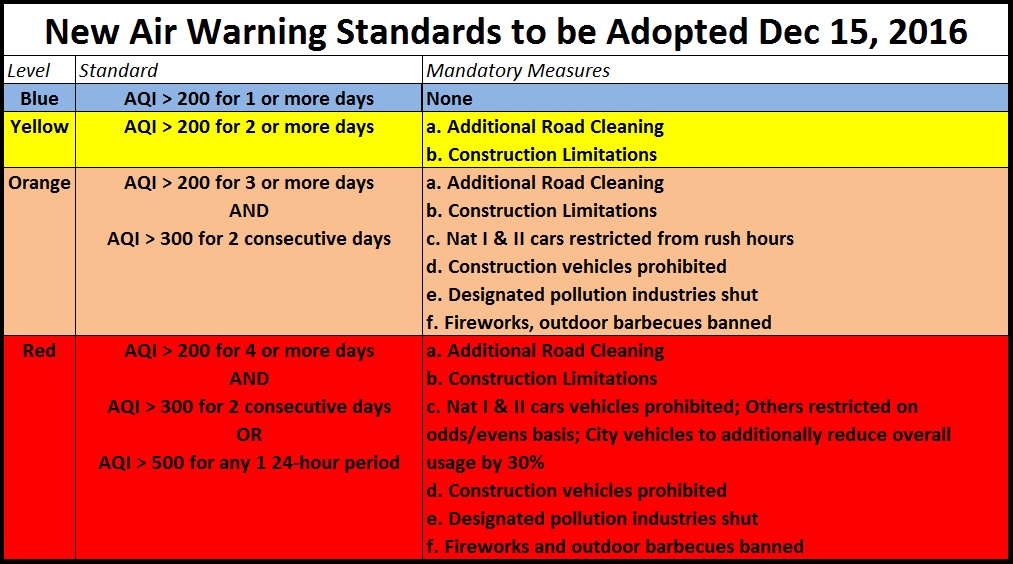
Blue (Level IV): City’s 24-hour average AQI level is forecasted to be over 200 for one day or more (and does not reach any of the next-level warnings).
Yellow (Level III): City’s 24-hour average AQI level is forecasted to be over 200 for two days or more (and does not reach any of the next-level warnings).
Orange (Level II): City’s 24-hour average AQI level is forecasted to be over 200 for three days or more; AND one of those days is forecasted to be greater than 300.
Red (Level I): City’s 24-hour average AQI level is forecasted to be over 200 for four days or more and any two consecutive days are forecasted to be greater than 300; OR City’s 24-hour average AQI level is forecasted to be over 500 for longer than one day.
The rules seem overly finicky and over-defined; they also leave some loopholes in calling an alert: if, for instance we’re forecasted to have four days of AQI 299 air, we meet none of the criteria for an Orange or a Red Alert.
Of course the other problem is the reliance on pollution forecasting, which at this point is about as accurate as weather forecasting, meaning it's distinctly possible we could have extended stretches of bad air without a warning issued, and likewise, a city on Red Alert lockdown with the air unexpectedly clearing up.
Regardless, it's a work in progress and it's good to see that the city (and the surrounding region) are at work to hone the regulations.
Here are the full measures:
Blue Alert
1. Health protection guidance measures:
a. Children; elderly; those with cardiovascular, cerebrovascular or other chronic diseases should reduce outdoor activities.
b. Primary Schools, Middle Schools and Preschools should reduce outdoor activities.
2. Suggested voluntary guidelines to reduce emissions:
a. Use public transportation rather than private vehicles; reduce idling time by shutting off engines in a timely manner when stopping.
b. Increase dust control measures at construction sites, on open ground, at material supply depots and other places.
c) Increase road cleaning to reduce traffic dust pollution.
d) Refuse (拒绝 jùjué) to participate in open barbecues.
3. Mandatory Requirements
None.
Yellow Alert
1. Health Protection Guidance Measures
a) Children; elderly; those with cardiovascular, cerebrovascular or other chronic diseases should endeavor to stay indoors and avoid outdoor activities.
b) Primary Schools, Middle Schools and Preschools should eliminated outdoor sporting activities and events, as well as between-class calisthenics.
c) Environmental protection, health and family planning, education and other departments and the district government should strengthen efforts to raise awareness of air pollution, emergency health protection.
2. Suggested voluntary guidelines to reduce emissions
a) Use public transportation rather than private vehicles; reduce idling time by shutting off engines in a timely manner when stopping.
b) Increase dust control measures at construction sites, on open ground, at material supply depots and other places.
c) Increase road cleaning to reduce traffic dust pollution
d) Refuse (拒绝) to participate in open barbecues.
e) Reduce the use of paints, solvents and other volatile organic compounds.
3. Mandatory Requirements
Under the presumption that it allows the city to function normally…
a) Increase the number of daily cleaning operations on major roads by more than 1x per day
b) Stop all outdoor construction sites from spray painting, applying slope protection sprays, construction demolition, mechanical cutting and other construction operations
Orange Alert (Level 2)
1. Health Protection Guidance Measures
a) Children; elderly; those with cardiovascular, cerebrovascular or other chronic diseases should endeavor to stay indoors and avoid outdoor activities; others should also reduce outdoor activity.
b) Primary Schools, Middle Schools and Preschools should eliminate all outdoor activities.
c) Medical and health institutions should offer medical guidance to those with respiratory diseases.
2. Suggested Volunteer Measures
a) Use public transportation rather than private vehicles; reduce idling time by shutting off engines in a timely manner when stopping.
b) Increase dust control measures at construction sites, bare ground, material supply depots and other places.
c) Increase road cleaning to reduce traffic dust pollution.
d) Reduce the use of paints, solvents and other volatile organic compounds.
e) Enterprises may adjust working hours as they see fit.
3. Mandatory Measures
Under the presumption that it allows the city to function normally ...
a) Increase the number of daily cleaning operations on major roads by more than 1x per day
b) Stop all outdoor construction sites from spraying paint, slope protection sprays, construction demolition, mechanical cutting and other construction operations
c) Older vehicles only meeting the national I and the national II emission standard light gasoline vehicles (including driving school vehicles) are banned from operating during workday rush hours.
d) All construction waste, cement and gravel transport vehicles prohibited from the road (with the exception of clean energy vehicles).
e) Industries appearing on the government’s list of restricted manufacturing enterprises are to be shut.
f) Fireworks and outdoor barbecues are banned.
Red Alert (Level 1)
1. Health Protection Guidance Measures
a) Children; elderly; those with cardiovascular, cerebrovascular or other chronic diseases should endeavor to stay indoors and avoid outdoor activities; others should also reduce outdoor activity.
b) Those working outdoors (可采取) an take protective measures such as wearing masks
c) Kindergartens, Primary and secondary schools to take flexible teaching or suspension and other protective measures
d) Medical and health institutions should offer medical guidance to those with respiratory diseases
2. Suggested Volunteer Measures
a) Use public transportation rather than private vehicles; reduce idling time by shutting off engines in a timely manner when stopping
b) Increase dust control measures at construction sites, bare ground, material supply depots and other places
c) Increase road cleaning to reduce traffic dust pollution
d) Reduce the use of paints, solvents and other volatile organic compounds
e) Enterprises can adjust working hours as they see fit, transfer and remote office and other flexible work
3. Mandatory Requirements
Under the presumption that it allows the city to function normally ...
a) Increase the number of daily cleaning operations on major roads by more than 1x per day
b) Stop all outdoor construction sites from spraying paint, slope protection sprays, construction demolition, mechanical cutting and other construction operations
c) The national I and the national II emission standard light gasoline vehicles (including driving school vehicles) are banned from operating at all; National III standard vehicles restricted on an odds/evens basis; Official city vehicles to operate on the odd and even number and additionally reduce vehicle use by 30 percent
d) All construction waste, cement and gravel transport vehicles prohibited from the road (with the exception of clean energy vehicles);
e) Industries appearing on the government’s list of restricted manufacturing enterprises are to be shut
f) Fireworks and outdoor barbecues are banned
g) Arrange to increase energy usage from sources outside the city while reducing usage of power produced locally
Image: Wayne Ye

